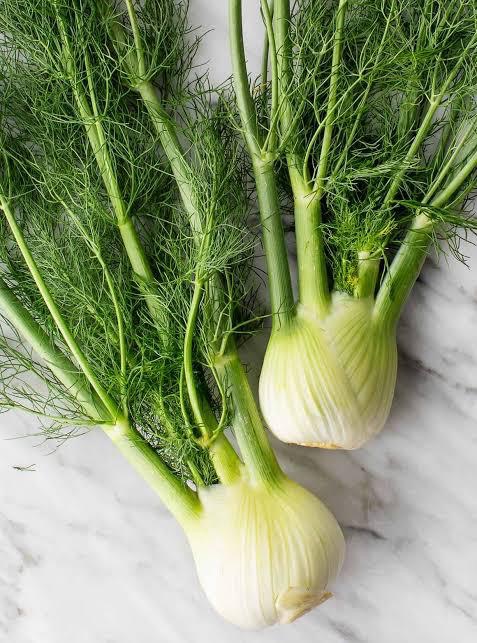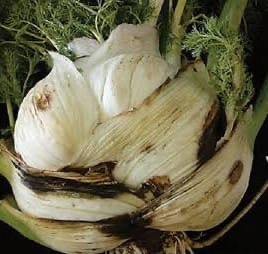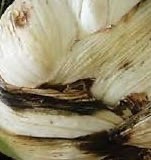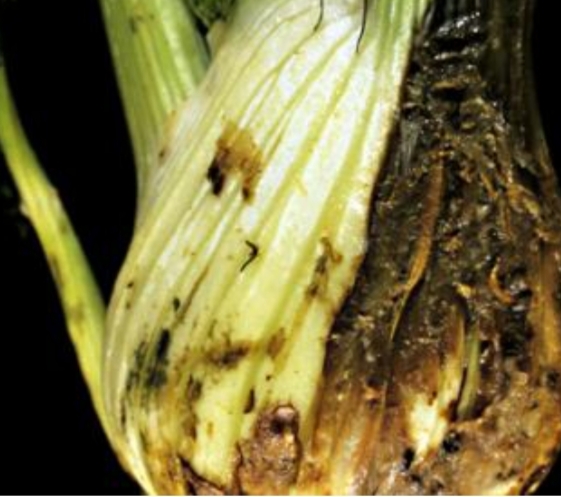Fennel Plant
Fennel is a perennial, 24-60 inches tall, and frost-tolerant. It prefer well-drained fertile soil in full sun. Keep the soil the moist. Fennel is edible and has medicinal properties.

Habit
Perennial
Height
0.6-1 m
Growth
Moderate
Soil
Well-drained, sandy loam
Shade
Full Sun
Moisture
Moist
Edible
Yes
Medicinal
Yes
Origin
Mediterranean
Climatic Condition
Subtropical
Temperature (°)
20-30°C
Humidity (%)
50-60%
Potting media
Peat-based mix
Fertilizers
Organic compost
Watering
Water regularly; prefers moist soil
Plant Weight
1-2 kg
Flowering Time
Summer to Fall
Soil Ph level
6.0 - 7.0
Water Ph level
6.0 - 7.0
Soil EC
0.4 - 0.6
Yield Per Plant
Edible herb
NPK ratio
10:10:10
life Span
Perennial
Health Benefits
Supports digestion; rich in vitamins and antioxidants.
Suggested Grow Media or Potting Mix ?
50% loamy soil, 30% compost, 20% sand
Suggested Fertigation/Fertilizers
Fertilize every 2 weeks with a balanced fertilizer.
Common Diseases and Remedies
Necrotic lesions , bacterial rot
Bacterial soft rots cause water-soaked spots , spots enlarge over time and become sunken and soft , browning or blackening of areas on a plant indicative of the death of plant cells
fermented buttermilk , neem oil
chlorhexidine gluconate in a 0.2 percent solution can be an effective antimicrobial agent when used as an endodontic irrigating solution
HEALTH BENEFITS
- Aids digestion, relieves bloating, and is rich in antioxidants.
- Used for respiratory and menstrual health.
What Is A Fennel Plant?
A Fennel plant is a perennial herb native to the Mediterranean region but also cultivated in many parts of the world. It has feathery green leaves, yellow flowers, and a bulb-like base. Both the bulb and the seeds of the plant are used in cooking, imparting a mild licorice-like flavor to dishes. Fennel is often used in salads, soups, stews, and as a flavoring for fish and meats. Additionally, it has medicinal uses and is believed to aid digestion and provide other health benefits.

What are the different types of fennel plant?
There are several different types of fennel plant, each with its own characteristics and culinary uses:
1. Florence Fennel (Foeniculum vulgare var. azoricum):-
Also known as finocchio, Florence fennel is cultivated primarily for its bulbous stem base. It has a sweeter and more delicate flavor compared to common fennel and is often eaten raw in salads or cooked in various dishes.
2. Common Fennel (Foeniculum vulgare var. dulce):-
Common fennel, sometimes referred to as sweet fennel, is the variety most commonly used for its seeds. It has a more pronounced licorice flavor compared to Florence fennel. The seeds are used as a spice in cooking, while the leaves and stems can be used as an herb or garnish.
3. Bronze Fennel (Foeniculum vulgare 'Purpureum'):-
This variety of fennel is prized for its ornamental value, with bronze-colored feathery foliage. While it can be used in cooking like common fennel, it is mainly grown for its decorative appeal in gardens and landscapes.

How to care for fennel plant?
1.Location:
Fennel plants thrive in locations that provide full sun and well-drained soil. Fennel requires full sun, which means it should receive at least 6-8 hours of direct sunlight per day. Choose a spot in your garden that receives ample sunlight throughout the day to promote healthy growth and optimal flavor development. Fennel prefers well-drained soil with a pH level between 6.0 and 7.0. Amend heavy clay soil with organic matter, such as compost or aged manure, to improve drainage and fertility. Avoid planting fennel in areas with compacted or waterlogged soil, as this can lead to root rot and other problems. When planting fennel, make sure to space the plants adequately to allow for proper air circulation and growth. For Florence fennel, which produces bulbs, space plants about 12-18 inches apart in rows or beds. Common fennel plants can be spaced slightly closer together, around 6-12 inches apart.
2.Sunshine:
Fennel plants thrive in full sun, which means they require at least 6-8 hours of direct sunlight per day to grow and develop properly.
3.Soil:
Fennel plants thrive in well-drained soil with good fertility and a slightly acidic to neutral pH level.
4.Hydration:
Hydration is crucial for the health and vitality of fennel plants, as they require consistent moisture to thrive.

5.Nourishment:
Nourishing fennel plants with proper nutrients is essential for their growth, vigor, and flavor development. Fennel plants can face various issues, including pests, diseases, and environmental stressors.
What are the benefits of the Fennel plant?
Fennel plants offer numerous benefits, both culinary and medicinal.
Culinary Uses
Digestive Aid
Antioxidant Properties.
Anti-inflammatory Effects

FAQS about growing fennel plant
1.What are the different parts of a fennel plant, and how are they used in cooking?
The different parts of a fennel plant include the bulb, foliage (leaves and stems), and seeds. The bulb of Florence fennel is the most commonly used part in cooking. It has a crisp texture and a sweet, licorice-like flavor. The bulb can be sliced or chopped and used raw in salads or cooked in various dishes such as roasts, gratins, sautés, or soups. It can also be grilled, braised, or roasted to bring out its natural sweetness.The feathery green leaves and tender stems of fennel plants are edible and impart a subtle licorice flavor to dishes. They can be used as an herb to add flavor and aroma to salads, marinades, dressings, sauces, and garnishes.
2.How do you propagate fennel plants?
Propagation from Seeds ; Sow fennel seeds indoors 4-6 weeks before the last frost date in your area. Plant seeds in seed-starting trays filled with seed-starting mix. Keep the soil moist and place the trays in a warm, sunny location. Once seedlings have developed several sets of true leaves and the threat of frost has passed, transplant them into the garden. Space seedlings 12-18 inches apart in rows or beds. Alternatively, you can sow fennel seeds directly into the garden after the last frost date. Plant seeds ¼ to ½ inch deep and space them 6-12 inches apart in rows or beds.
3.Can you provide tips for harvesting and storing fennel?
Harvest fennel bulbs when they reach a desirable size, usually around 3-4 inches in diameter. The bulbs should be firm and have a white or pale green colour. Use a sharp knife or garden shears to cut the bulbs off at ground level. Leave a small portion of the stem attached to the bulb for easier handling. Harvest bulbs promptly to prevent them from becoming too tough or woody.Harvest fennel foliage (leaves and stems) as needed throughout the growing season. Snip off individual leaves or cut entire stems near the base of the plant. Foliage can be harvested at any stage of growth but is typically most flavorful when young and tender
4.Are there different varieties of fennel, and how do they differ in flavor and usage?
Florence Fennel ,also known as finocchio, Florence fennel is cultivated primarily for its bulbous stem base. It has a sweeter and more delicate flavor compared to other varieties of fennel. The bulb can be eaten raw in salads or cooked in various dishes such as roasts, gratins, sautés, or soups. Common Fennel (Foeniculum vulgare var. dulce), Common fennel, also referred to as sweet fennel, is the variety most commonly used for its seeds. It has a stronger, more pronounced licorice flavor compared to Florence fennel. Common fennel seeds are used as a spice in cooking and baking, while the foliage can be used as an herb or garnish.
5.What are the medicinal properties of fennel, and how is it used in herbal medicine?
Fennel has a long history of use in traditional medicine for its various medicinal properties. Digestive Aid, Anti-inflammatory , Antispasmodic ,Galactagogue , Respiratory Health.



